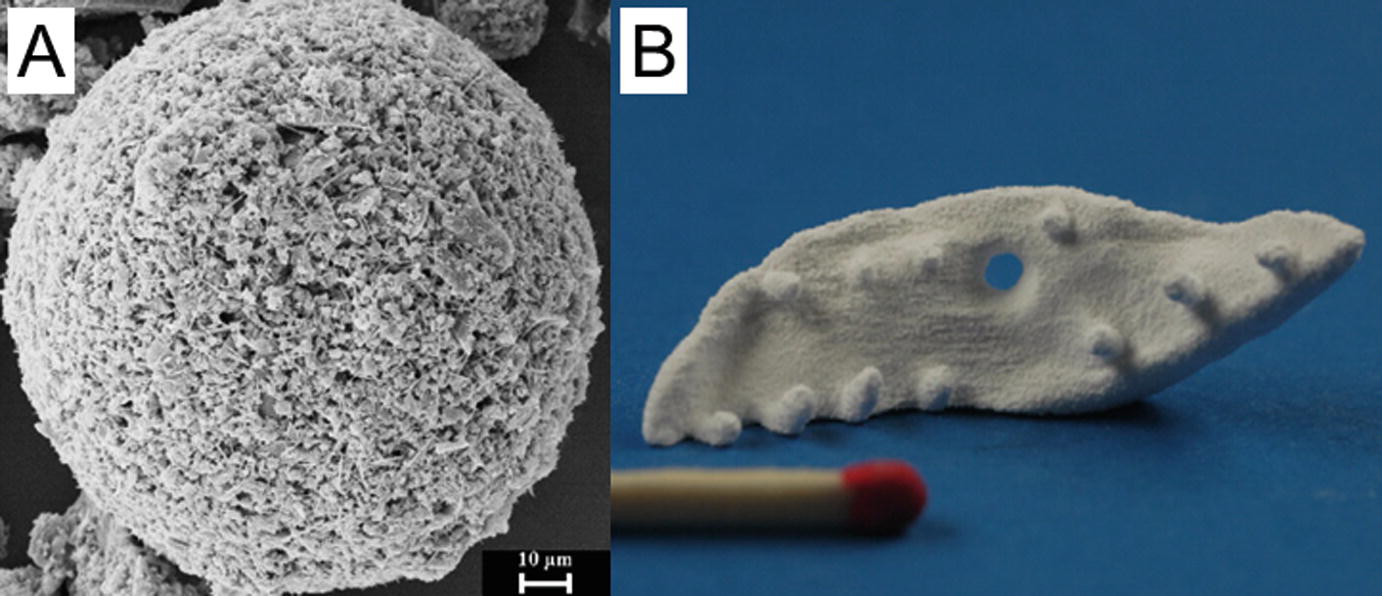Highly porous polymer ceramic composite scaffolding appears to be a promising substrate for bone tissue engineering due to its excellent mechanical properties and osteoconductivity.
What areporous ceramic scaffolds.
Highly porous ceramic scaffolds have been fabricated from a 70 sio 2 30 cao glass powder using stereolithography and the lost mould process combined with gel casting.
The sintering temperature is 900 c and the compression strength is 15 mpa 2 to 3 mpa.
1 graded porous scaffolds 600 to 800 μm pores in the center and 350 to 500 μm pores at the periphery 2 large porous scaffolds 600 to 800 μm uniform pores and 3 small porous scaffolds 350 to 500 μm uniform pores.
It is widely known that increasing interest in porous ceramics is due to their special properties which comprise high volumetric porosity up to 90 with open or closed pores and a broad range of pore sizes micropores.
The composite scaffolds supported uniform.
Amin and others published bioceramic scaffolds find read and cite all the research you need on researchgate.
The degree of porosity is 60 70 per cent.
Every day thousands of surgical procedures are performed to replace or repair these tissues.
The pore shape is spongiose and the pore size is 200 300 μm.
Modern porous ceramic materials can be used for a wide range of possible applications such as catalyst support structures filter heat or acoustic insulation scaffolds or lightweight structures.
D 50 nm.
D 2 nm.
After sintering at 1200 c the glass crystallised to a structure of wollastonite and pseudowollastonite grains in a glassy matrix with a bulk porosity of 1 3.
Millions of peoples in the world suffer from their bone damage tissues by disease or trauma.
Bioglass and calcium phosphate ceramic materials are imperative scaffolds for hard tissue engineering.
50 nm d 2 nm and macropores.
Pdf on dec 13 2017 amira m.
Although these porous scaffolds have shown excellent osteogenesis osteoinduction and osteoconduction in bone tissue regeneration they still face challenges such as the repair of bone defects with critical size i e typically 10 mm.
A paradigm shift is taking place in medicine from using synthetic implants and tissue grafts to a tissue engineering approach that uses degradable porous material scaffolds integrated with biological cells or molecules to regenerate tissues.
The following 3 groups of scaffolds with completely interconnectedpores were prepared by our template casting method 18.
Especially due to their highporosity high temperature resistance pore interconnectivity and permeability they can be used for example as exhaust.
These properties have many uses comprehending macroscaled devices mesoscaled materials and microscaled pieces.
The repair of these defects has become a major clinical and socioeconomic need with the increase of aging population and.
This new paradigm requires scaffolds that balance temporar.
The types of ceramics are porous blocks and porous granules and are most often used in orthopaedics.



























